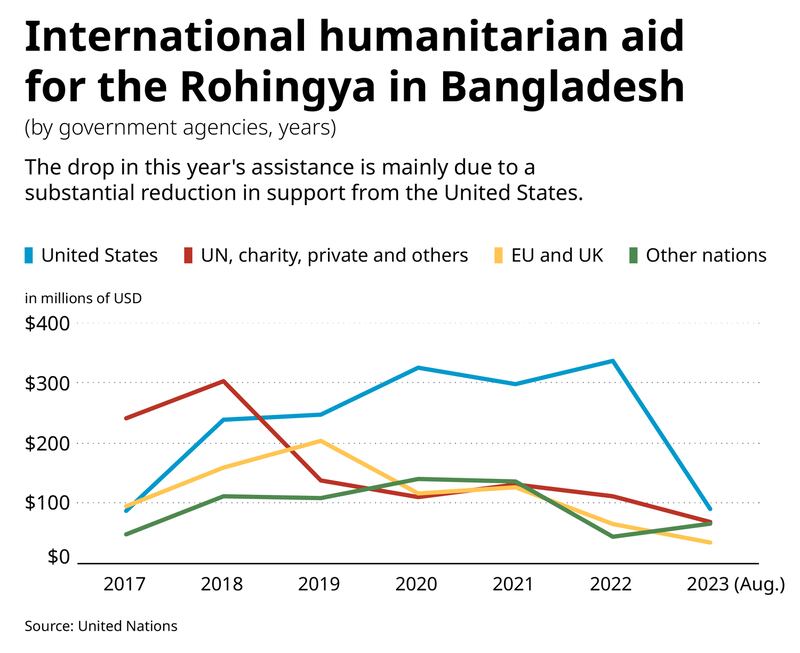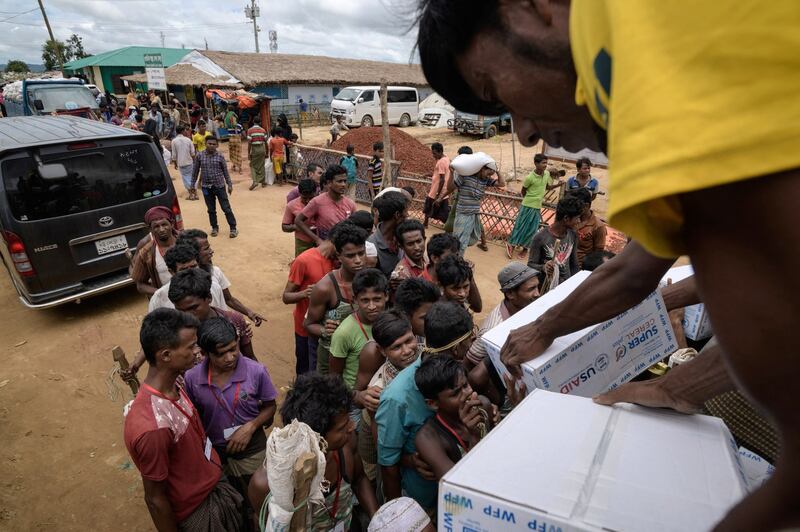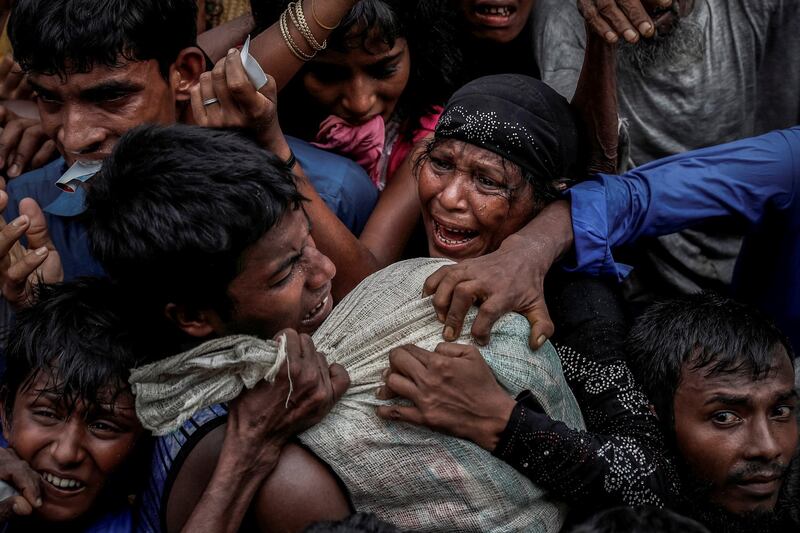Global aid for Rohingya, the displaced and oppressed stateless minority from Myanmar, has declined sharply this year as donor nations have shifted their priority to the war in Ukraine, humanitarian and human rights groups say.
From being “among the best funded humanitarian responses” until last year, an annual fundraising plan by international agencies for Rohingya refugees in Bangladesh may record its lowest contributions in 2023 since it was set up in 2017, data indicates.
The Joint Response Plan (JRP) for the Rohingya Humanitarian Crisis has so far received less than half the contributions this year than in 2022, data from the U.N. Office for the Coordination of Humanitarian Affairs (OCHA) shows. And the U.S. $268 million the plan has got so far is a third of the $876 million it sought for the year.
This drop comes at a time when the World Food Program earlier this year reduced food assistance to the Rohingya 33% – to $8 a month per person – citing a funds shortage, even as it acknowledged that that 45% of refugee families were not eating a sufficient diet and malnutrition was widespread in the refugee camps in Cox’s Bazar.
“Aid [for the Rohingya] has been dwindling in the last few years, and the JRP is still underfunded. Donors are stretched thin responding to the situation in Ukraine, Sudan, and Afghanistan,” John Quinley III, director of advocacy group Fortify Rights, told BenarNews.
“The decline in food aid has had significant health consequences for Rohingya refugees – both their physical and mental health. Donor governments should ensure Rohingya refugees in Bangladesh have access to adequate food.”

The United States, the largest donor to the JRP since it was set up in 2017, has contributed $100 million this year so far, down from $336.7 million in total last year. By contrast, U.S. non-defense assistance to Ukraine spiked to $22 billion in 2022-2023 compared to an annual average of $500 million in earlier years, according to foreignassistance.gov, a United States government database.
About 1 million Rohingya, including about 740,000 who fled Myanmar following a brutal military offensive in their home state of Rakhine in August 2017, live mostly in crowded and sprawling refugee camps in Cox’s Bazar in southeastern Bangladesh.
The international agencies’ fundraising plan will continue to receive funds through the end of the year, but it likely won’t match past amounts, said Romain Desclous, a spokesperson at the U.N refugee agency UNHCR in Bangladesh.
That’s not because of “fatigue” or “disinterest” from donors, he told BenarNews.
“[The Rohingya crisis] was up until last year among the best funded humanitarian responses,” Desclous said.
He said the crisis was no longer considered an emergency situation but a protracted one, which means the emergency has lasted so long that it has become a normal situation.
“That means humanitarian emergency funds get directed towards other emergencies, and the world is not lacking in emergencies,” he said.

When Russia invaded Ukraine on Feb. 24, 2022, the situation in the former Soviet republic became one such emergency situation, noted Sultan Mohammed Zakaria, a Bangladesh country specialist in the U.S. with rights watchdog Amnesty International.
“The Russia-Ukraine war has shifted global diplomatic priorities as the conflict has deeply unsettled the global security architecture while the world is still grappling with the economic fallout of COVID-19,” he told BenarNews.
“Yet we live and thrive on the strength of our collective consciousness. There must never be any excuse to forget a million refugees.”
Need ‘continuation, not reduction, of life-saving aid’
The huge decline in funds for the Rohingya this year stems from a drastic drop in U.S. contributions, which mostly ramped up its funding over 2018-2022, even as contributions from other sources waned. The JRP was able to make up what it lost from other donors through the U.S. funds increases.
The United States has provided at least 40% of total global funds contributed toward the Rohingya refugees to the JRP so far since 2017, according to OCHA’s data.
In 2022, the U.S. contributed the most it had ever done – $336 million – to the JRP. By comparison, the UK, the second-highest donor, contributed only a tenth of that amount last year.
Therefore, the U.S. contribution of $100 million so far this year represents a drastic reduction. But, it turns out, American assistance globally has dropped in 2023, according to a government database.
U.S. global assistance fell to $27 billion so far this year from $58 billion last year, according to data from ForeignAssistance.gov.
This decline in U.S. humanitarian assistance over the last year has occurred “even as needs reach record levels,” is negatively affecting refugees around the world, acknowledged Daniel Sullivan, a regional director for Refugees International.
“In March 2021, [U.S.] Secretary of State Antony Blinken made an official genocide determination and committed to helping the Rohingya build a path out of genocide, Sullivan told BenarNews.
“That path must begin with continuation, not reduction, of life-saving aid.”

The more than 1 million Rohingya in the makeshift camps are fully dependent on international aid because Bangladesh does not allow them to work in the country. Some enterprising refugees who set up shops within the camps had to see the authorities shut down their establishments or even demolish them.
Washington, for its part, has not publicly discussed the steep drop in its global assistance and a State Department official who BenarNews contacted suggested, like the U.S. had done before, that the Rohingya be allowed to work.
“[We] continue to meet with and encourage the government of Bangladesh to re-examine its restrictions on allowing refugees to earn a living, which would allow our humanitarian partners to focus on assisting the most vulnerable,” the department spokesperson said in a statement.
Bangladesh Foreign Minister A.K. Abdul Momen ruled out allowing the refugees to work inside or outside the camps.
“The West advises us to employ the Rohingya through training. It is not possible,” he told BenarNews.
“We are struggling to give work to our own people.”
Ahammad Foyez in Dhaka contributed to this report. BenarNews is an RFA-affiliated news service.

